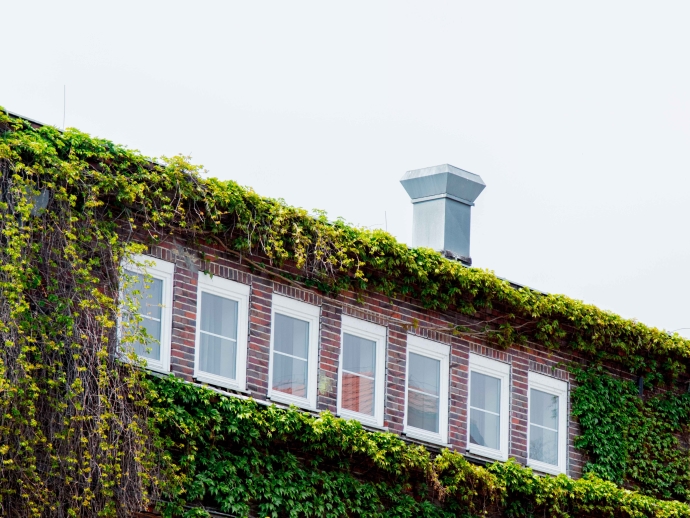Commercial Green Roof Agriculture: Urban Farming Opportunities in DFW

As urban areas continue to grow, the need for sustainable practices in cities like Dallas-Fort Worth (DFW) becomes increasingly important. One innovative solution that has gained traction is commercial green roof agriculture. By transforming rooftops into productive gardens, businesses can not only enhance their sustainability efforts but also contribute to local food production, improve air quality, and create green spaces in the urban landscape. This article explores the benefits of green roof agriculture, the opportunities it presents for urban farming in DFW, and how businesses can get started.
The Concept of Green Roof Agriculture
Green roofs are essentially layers of vegetation planted on rooftops, designed to provide various environmental benefits. They can be categorized into two types: extensive and intensive. Extensive green roofs have a shallow layer of soil and are typically planted with drought-resistant plants, while intensive green roofs have deeper soil profiles that can support a wider variety of plants, including vegetables and herbs.
Green roof agriculture specifically focuses on growing food crops on these rooftops, utilizing the space efficiently while minimizing the ecological footprint of urban development. This practice not only enhances biodiversity but also contributes to the local economy by providing fresh produce to nearby communities.
Benefits of Green Roof Agriculture
-
Urban Food Production: One of the most significant advantages of green roof agriculture is its potential to produce fresh food in urban areas. With increasing awareness about food miles and sustainability, growing food locally reduces transportation costs and carbon emissions associated with food distribution.
-
Improved Air Quality: Plants naturally filter pollutants from the air, and by incorporating vegetation on rooftops, businesses can contribute to improved air quality in densely populated urban areas. This is particularly beneficial in DFW, where air quality can be a concern during certain seasons.
-
Stormwater Management: Green roofs absorb rainwater, reducing runoff and helping to manage stormwater more effectively. This is crucial in urban settings where impervious surfaces can lead to flooding and water quality issues.
-
Energy Efficiency: Vegetation on rooftops acts as insulation, helping to regulate indoor temperatures by reducing heat absorption during hot months and retaining warmth during cooler months. This can lead to lower energy bills for heating and cooling.
-
Enhanced Aesthetics: Green roofs contribute to the beautification of urban landscapes, providing visual appeal and creating inviting spaces for employees and visitors alike.
-
Biodiversity Promotion: By incorporating native plants into green roof designs, businesses can create habitats for pollinators and other wildlife, enhancing urban biodiversity.
Opportunities for Urban Farming in DFW
The DFW area presents unique opportunities for commercial green roof agriculture due to its growing population and increasing demand for local produce. Here are some key opportunities for businesses considering this venture:
-
Partnerships with Local Farmers: Businesses can collaborate with local farmers or agricultural organizations to design and maintain green roofs that produce high-quality crops. These partnerships can also facilitate knowledge sharing and best practices for urban farming.
-
Community Engagement: Green roofs can serve as educational spaces where community members learn about sustainable practices and healthy eating. Hosting workshops or farm-to-table events can foster community involvement and support local initiatives.
-
Restaurants and Food Service Providers: Restaurants looking to source fresh ingredients locally can benefit from establishing green roofs that supply their kitchens with herbs, vegetables, and fruits. This not only enhances menu offerings but also attracts environmentally conscious diners.
-
Corporate Social Responsibility (CSR): Businesses that invest in green roof agriculture demonstrate their commitment to sustainability and corporate social responsibility. This can enhance brand reputation and attract customers who prioritize eco-friendly practices.
-
Grant Opportunities: Various grants and funding programs are available for businesses interested in implementing sustainable practices such as green roof agriculture. Researching these opportunities can help offset initial setup costs.
Getting Started with Green Roof Agriculture
For businesses interested in exploring green roof agriculture in DFW, here are some steps to consider:
-
Conduct a Feasibility Study: Assess the structural integrity of your building's roof to determine if it can support a green roof system. Consider factors such as weight capacity, access to sunlight, and existing infrastructure.
-
Choose the Right System: Decide between extensive or intensive green roofing systems based on your goals for food production and maintenance capabilities. Intensive systems require more investment but allow for a wider variety of crops.
-
Select Appropriate Plants: Choose plants that are well-suited for rooftop environments, considering factors such as drought tolerance, growth habits, and seasonal availability. Native plants are often a great choice due to their adaptability.
-
Plan for Irrigation: Implement an efficient irrigation system that conserves water while ensuring adequate moisture levels for plant growth. Consider using rainwater harvesting systems or drip irrigation methods.
-
Engage Professionals: Collaborate with landscape architects or specialized contractors experienced in green roof installations to ensure proper design, installation, and maintenance.
-
Educate Employees and Community Members: Provide training sessions or workshops on sustainable practices related to green roof agriculture to engage employees and community members actively.
Conclusion
Commercial green roof agriculture offers an innovative solution for addressing food production challenges while enhancing sustainability efforts in urban environments like DFW. By transforming rooftops into productive gardens, businesses can contribute positively to local communities while reaping numerous environmental benefits.
With careful planning, collaboration with local experts, and a commitment to sustainability, businesses can successfully implement green roof agriculture initiatives that not only improve their bottom line but also foster a healthier urban ecosystem for future generations. As cities continue to grow, embracing such sustainable practices will be essential in creating resilient communities that thrive amidst the challenges of modern urban living.

